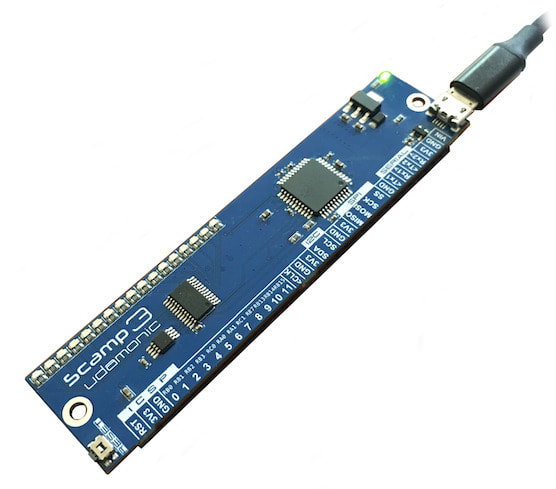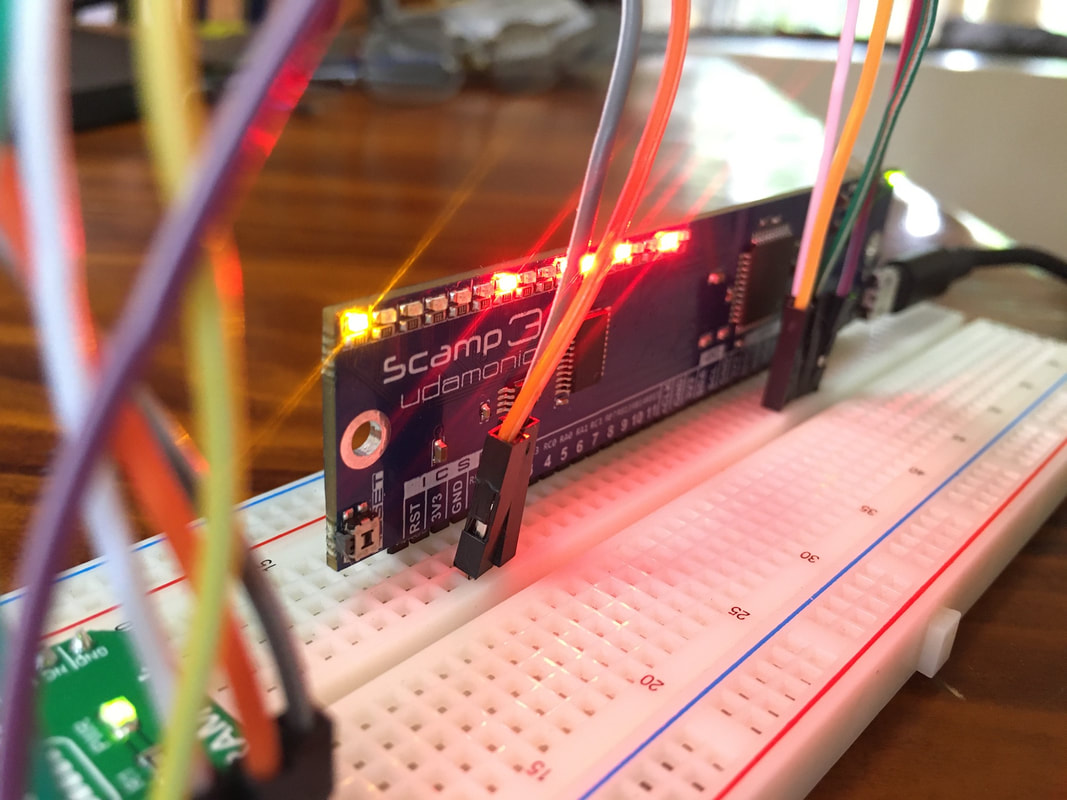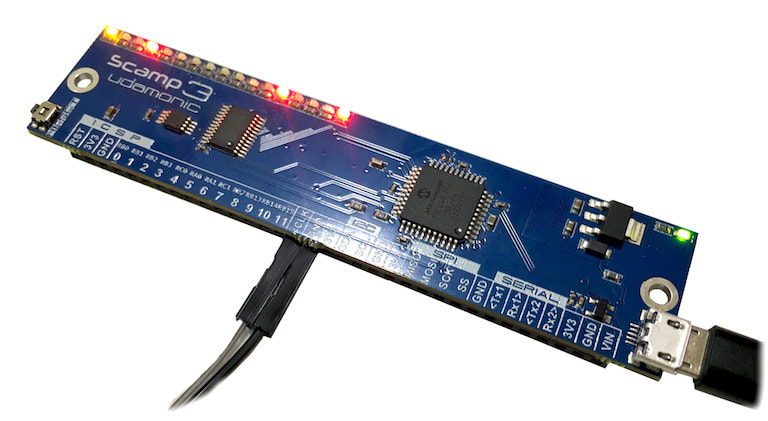
1

What is a Scamp?
source link: https://udamonic.com/what-is-a-scamp.html
Go to the source link to view the article. You can view the picture content, updated content and better typesetting reading experience. If the link is broken, please click the button below to view the snapshot at that time.

What is a Scamp?
|
Scamp is a self-contained Forth computer that you can use as the computing engine for your projects. It's easy to interface, and easy and quick to program using Forth, the world's best embedded programming language.
To use a Scamp, you don't need to install any IDEs, compilers or development tools. FlashForth is preinstalled. Everything runs directly on Scamp, and all you need is a host computer with a USB interface and some terminal software. It's used in schools and universities for research or teaching. It's used in home projects by hobbyists. Companies use Scamp in product development to rapidly prototype and debug their own hardware, or as the controller core of their next product. |
|
Scamp has an I/O connector that makes it very easy to interface to external devices.
You can add switches, buttons, control knobs, LEDs, and other electronics modules just by plugging them in. It can be interfaced to many of the modules that are available for Arduinos and similar embedded systems. Writing software to use other hardware is very easy, and fun. You can interactively talk with peripheral hardware, so debugging is very fast and efficient. You can see what is going on. |
Scamps can be used standalone, using "dupont" jumper wires to connect to external devices, modules or components.
Scamps can be plugged into a breadboard using the optional pin header. Using a header, a Scamp can plug into your own PCB design as a Forth compute module. Scamp can be easily integrated into your next product.
Get your own Scamp and discover how fast embedded development can be from our Order Page.
Scamps in the News
About The ScamP Processor
Scamp is based on the Microchip PIC24F64GB202 microcontroller (datasheet). It has a useful mix of peripherals (including a USB interface). It has 64K of flash and 8K of RAM, a good amount for running Forth. This may not seem much, but FlashForth requires on the order of 20K flash, and only 2K of RAM. It is a very efficient programming environment. So, the PIC24F64GB202 has plenty of spare memory for your application code and variables. You will be surprised just how far you can get with 8K of RAM!
|
Some of the main features of the PIC24F64GB202 microcontroller are:
• High-Performance Modified Harvard Architecture CPU • Two Address Generation Units (AGUs) for separate R/W addressing of the data space • 16-bit data path and 24-bit addressing • Sixteen by 16-bit register array • Up to 16 MIPS operation from a 32 MHz CPU clock • Deep sleep modes, running on a current as low as 40 nA • Single-cycle hardware fractional/integer multiplier • Hardware divider • 20,000 erase-cycle flash memory with minimum retention of 20 years • Onchip USB 2.0 interface • Cryptographic AES Engine with 128, 192 or 256-bit key • DES/ Triple DES (TDES) Engine • 32-bit CRC generator • True Random Number Generator (RNG) • Pseudorandom Number Generator • Non-readable, onchip, OTP key storage • 10/12 bit multichannel ADC • 6-channel DMA controller • Five 16-bit timers • Six PWM modules • Six input capture modules • SPI, I2C and I2S modules • Four UART modules • Onchip FSK and PSK modulation • High-current 18mA sink/source on I/O pins • Peripheral functions are software remappable to most pins |
Next, learn about getting started with Scamp.
Recommend
About Joyk
Aggregate valuable and interesting links.
Joyk means Joy of geeK


